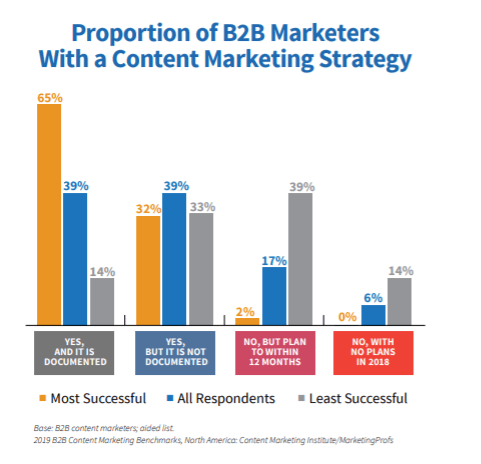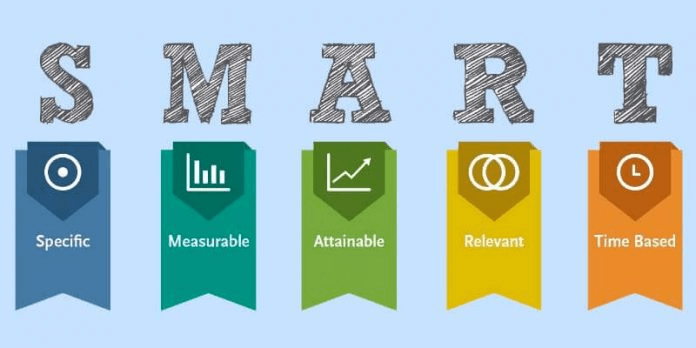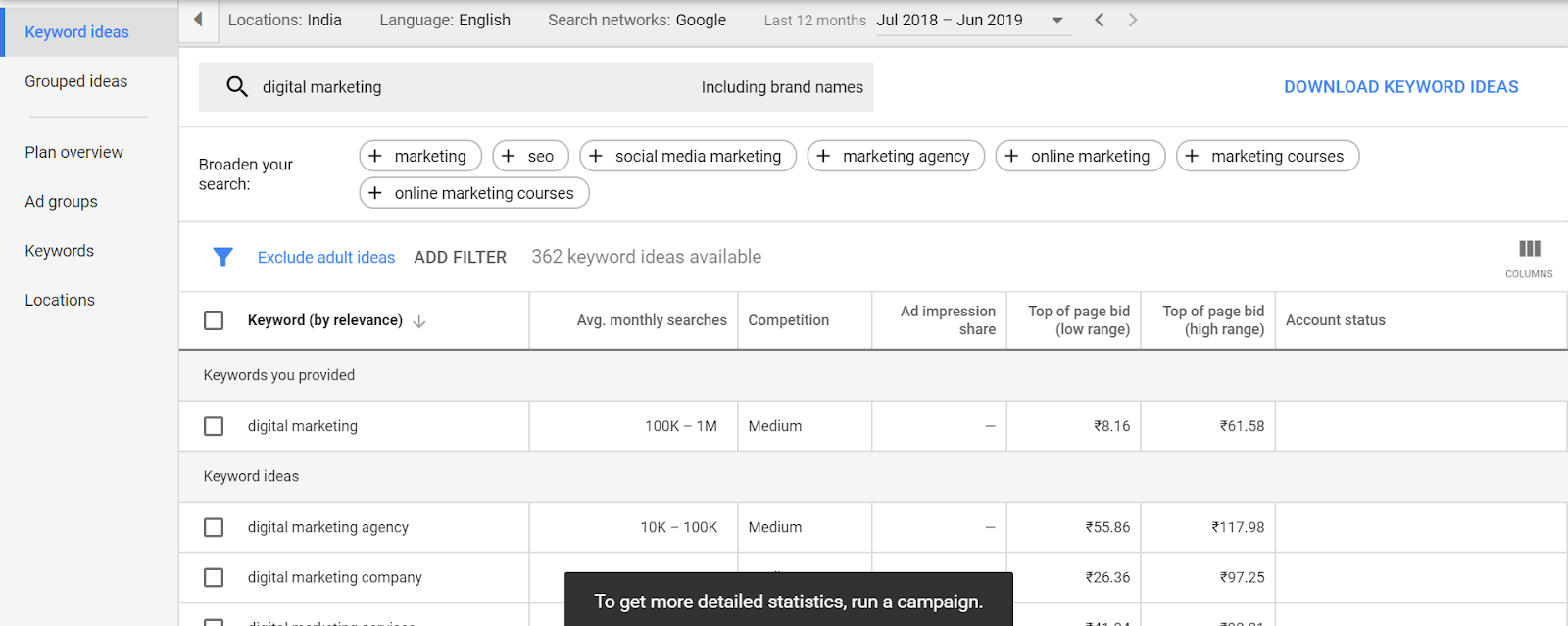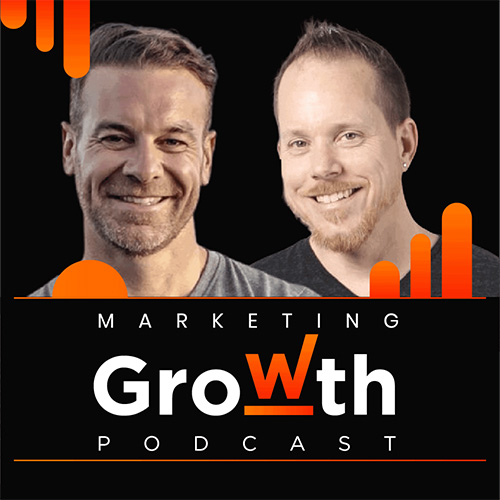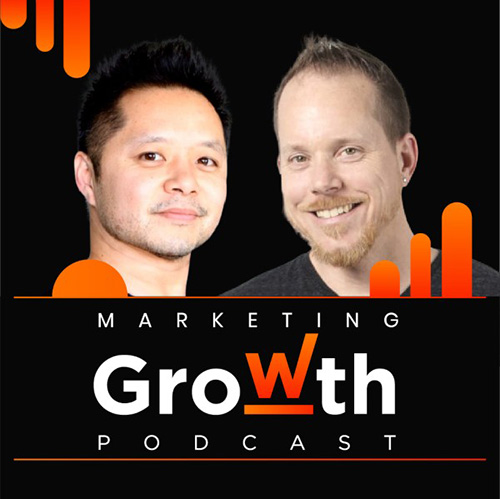Content marketing is one of the most powerful means of marketing and promoting your brand. Nearly 65% of the most successful businesses have a well-documented content marketing strategy. On the other hand, 53% of the least successful businesses don’t even have a content marketing strategy.
Image via Content Marketing Institute
This clearly indicates that without a content marketing strategy, it is nearly impossible to succeed. However, creating a content marketing strategy is one thing, and executing it is an entirely different ballgame.
My guest today, Katie Lance, is the co-founder and CEO of Katie Lance Consulting. She’s helped many real estate agents and brokers to realize their true potential through social media and content marketing.
In this episode, she shares some insightful tips about how you can create and execute a content marketing strategy.
1. Set Your Goals
You must set a goal for your content marketing strategy. Without a goal, you’ll be directionless and won’t know where to concentrate your efforts. Your goals should be SMART (Specific, Measureable, Achievable, Realistic, and Timely).
Image via ToolsHero
Some of the goals that you can set are:
- Increase your website traffic
- Improve your conversion rate
- Get more leads
- Generate more engagement
2. Understand Your Target Audience
It’s crucial to understand your target audience. Without a thorough understanding of your target audience, it can be difficult to create content that is suited for them. A solid content marketing strategy involves understanding your target audience and creating content for them.
You need to describe your target customers based on their demographics, interests, locations, etc. It is also necessary to understand their pain points. Identifying these enables you to craft your content so that it solves their problems. When they see that your content addresses their issues, they’ll be more likely to keep returning back to you.
You may also have multiple personas within your target audience. These are called buyer personas. For each buyer persona, you will have a different set of characteristics that define them. This can help you craft your content to fit the desires and problems of each of your buyer personas. Through this content marketing method, you can cover everyone in your target audience.
Finding your target audience also helps you find the platforms where they are the most active. This way, you can make your presence felt even on social media.
3. Define the KPIs
Once you’ve got your target audience and goals set, you need to define a few key performance indicators (KPIs) that can help you track your success.
They will be based on the goals that you have set for yourself. The KPIs also have numbers associated with them so that they are trackable. Some of the KPIs you can set for yourself are:
- Generate $X in revenue within a month
- Increase your website traffic to X visitors per day
- Get X mentions, comments, and shares on your blogs
- Get X of your pages to rank #1 in the SERPs
It’s also crucial to keep an eye on your marketing expenses per campaign. These can give you a better idea of how much you’re actually spending to hit your desired goals.
4. Use Keyword Clustering
The next step in executing your content marketing strategy is coming up with topics and finding relevant keywords for your content.
Doing so helps you come up with topic ideas for your blog posts that your target audience might find attractive. To find keywords, you can use tools like the Google Keyword Planner.
Image via Google Keyword Planner
While the process of finding keywords is easy, the next step can be quite difficult. You may find loads of long-tail keywords during your keyword research. This begs the question, how will you develop these keywords into content ideas?
The best method of going about this is through keyword clustering. In this method, you group the keywords in different lists based on their meanings.
To help you come up with topics, you can use the Keyword Clustering Tool from Serpstat. By using Google search results, this tool helps you find the topics that are behind your keywords. It even shows you keywords that you can use to optimize your articles further.
5. Create a Content Calendar
For your content strategy to succeed, you need to know exactly when you’ll be publishing your content. This requires thorough planning beforehand in the form of a content calendar. When you’ve planned all of your content in advance, you’ll be able to roll it out consistently.
Through a content calendar, you can also schedule all of your content in advance, so this leaves enough room to plan and publish the content. You can create the content calendar using something as simple as Google Calendar.
However, if you’re managing a lot of content, this tool may not suffice. In such a situation, Katie recommends using tools such as Asana. Not only does it help you manage your content but even allows you to coordinate well when your teams are working remotely.
Image via Asana
6. Create & Distribute Content
The last step of creating and executing a content marketing strategy is content creation and distribution. You need to ensure that you’re creating the highest quality of content that can provide value to your readers.
It should be informative and educational in nature. Additionally, it should be grammatically correct and must rely heavily on facts. It helps if you split the content into bite-sized chunks that your audience can easily understand and absorb.
However, writing content isn’t everything. You need to put effort into distributing it so that it reaches your target audience. For this, you can use email marketing, drip campaigns, influencer marketing, etc.
After that, you will need to analyze the results of your strategy to understand how well it’s performing. Based on those, you can modify and optimize it.
Executing Your Content Marketing Strategy
A content marketing strategy is crucial for the success of your content marketing campaigns. Without it, you won’t be able to reach your target audience effectively.
You must identify your goals and target audience. In addition, you should develop a content calendar and follow it. Create high-quality content and distribute it to ensure that it reaches your target audience. Lastly, based on the results, optimize your strategy further.
Are you having trouble creating and executing your content marketing strategy? If you need any assistance with it, you can always reach out to me.

Shane Barker is a digital marketing consultant who specializes in influencer marketing, product launches, sales funnels, targeted traffic, and website conversions. He has consulted with Fortune 500 companies, influencers with digital products, and a number of A-List celebrities.





